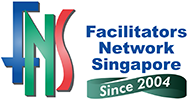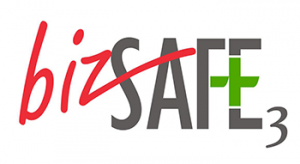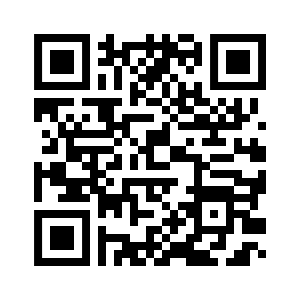Since completing the Advanced Facilitation Programme in 2022, I was blessed to have been given a few opportunities to get my feet wet progressively as assistant and group facilitator. I am deeply grateful to Janice Lua, co-founder of Facilitators Network Singapore, for the invaluable insights I gained. I was able to internalise experiential lessons that neither the best wordsmith could bring forth in a theory book nor any workplace training session could draw out.
Allow me to share my reflections from these sessions.
Reflection 1
In facilitation, detailed planning is vital but is never a guarantee for autopilot cruise; be ever ready to respond calmly and effectively to surprises on the go.

Years ago, I attended a military course during my reserve service. It was drummed into us that no battle plan, no matter how thorough, could survive the first contact with the enemy. Great leaders and military strategists like Winston Churchill and Dwight D. Eisenhower held similar views. Amidst a constantly changing and fluid environment and given that the enemy would not necessarily act or react in accordance to how one’s plan had premised, any strategy developed had to be constantly assessed and adjusted. Yet all leaders and strategists know that failing to plan is sheer folly, as is stubbornly sticking to a plan or strategy amid an ever evolving and unpredictable environment.
This insightful lesson struck home so vividly in one of the workshops that I was involved in as a Group Facilitator (GF). The Lead Facilitator (LF) had prepared a very thorough Facilitation Plan, down to the granular detail of how chairs should be moved during the transition from Objective 1 to Objective 2. It was a so-called “idiot proof” plan that no one had excuse not to know what to do at every step. It was inconceivable that anything at all could go wrong. Yet, the inconceivable did happen when we were getting into the 3rd session.
In accordance with good process facilitation practice, as we completed one session, we would set up the room in readiness for the following day. On the very next day, just as we were making our way to the venue, the client’s office frantically called to inform us that we had to re-locate to another room because the original room we had been using thus far had not been booked! Fortunately, we got there early and the alternative room was not too far away. It still meant having to set up the seating arrangement and to put up the various charts in double quick time before the participants arrived. Although not catastrophic, the lapse had inevitably created anxiety and generated stress of varying degrees among the facilitating team. Tension and anxiety are not conducive vibes for the facilitation process. Thankfully, the oversight did not derail the process and the team was able to deliver the outputs without overrun in time. It is part of FNS’ practice for the facilitation team to be always early for our facilitation session, giving ourselves time to respond to unforeseen or changing circumstances.

Reflection 2
Mobile phone – the ubiquitous competitor for attention; be resolute not to let it even have a toehold during the session.
I observed that although the LF diligently reminded participants at the outset to put their mobile phones to silence and to only use them for emergency matters outside the room, there were several recalcitrant participants who remained glued to their phones. They gave scant attention to the LF’s briefing. I am reminded of WIIFM (what’s in it for me?) and in my view, these participants clearly did not consider the session to be of much significance to themselves.
For effectiveness, I would advocate that the LF not just verbalise the ground rule of putting handphones to silence but to enforce the physical putting away of the devices. GFs can help ensure that this is complied with in each group – nobody should be holding a mobile phone in hand, save for responding to an emergency by stepping outside the facilitation room.

Reflection 3
Client leadership commitment to the project is a key determinant of the facilitation process successfully attaining the 3 O’s (Objective-Output-Outcome).
Having been involved in a few different projects with different clients, I could compare between one where none other than the board Chairman was present in all the sessions and another where the CEO was unavailable to give the opening remarks as scheduled on the agenda. In the former, the mood was highly positive, the sessions were highly energised and participants were spontaneous and enthusiastic. Because of the top leadership commitment and their walking the talk, the vital element of trust and mood of optimism prevailed – participants trusted that it was not a waste of their time and that they could look forward to real outcomes from this process. On the other hand, with the latter organisation, the atmosphere was shrouded by scepticism and cynicism. The element of distrust and mood of pessimism prevailed as was evident by direct and oblique comments about sub-par hygiene factors instead of promises of better things to come.

Top management and leadership commitment is indeed pivotal to securing participants’ trust, commitment, and earnest contribution thereby ensuring the attainment of quality outputs and outcomes at the end of the process. Without commitment from the top, participants tend to focus on the problematic backyard of the here and now and remain stuck in the breakdown mode. Commitment from the top will rejuvenate them toward breakthrough mode and to see the frontier of possibilities that lie ahead after the process. There is a Chinese idiom 上梁不正下樑歪 (shàng liáng bùzhèng xià liáng wāi – literal translation: the upper beam is not straight and the lower beam is crooked), meaning if leadership sets a bad example, their subordinates will follow suit.
Reflection 4
Lead Facilitator (LF) and Group Facilitator (GF) must work hand in glove – LF knowing when and how to support the GF; GF must secure the LF’s support at the timely moment.
We often hear people say “The road to hell is paved with good intentions.” I realised what this meant during a workshop in which I was one of the GFs. I remember we were rotating the small groups around each group’s flipchart to expand on the list. Understandably, as each list grew longer, subsequent groups that came found it increasingly harder to think up new unique ideas. They just needed more time and as GF I had to engage them more by asking probing questions. I did not request for the LF’s assistance. But much to my surprise, the LF stepped into my group and started prompting the group members. Perhaps being mindful of time, the LF thought that my group was taking “too long” to add new unique ideas and that I could do with some help. The LF’s good intention aside, his unsolicited “assistance” had jarred the group dynamics with the sudden presence of another facilitator. I tried to minimise the confusion amongst the group members by stepping aside and let the LF take the space. It was also to maintain the image of solidarity and unity amongst us the facilitators.

From another perspective, at a different session a GF had wanted to seek the LF’s assistance to clarify a point contributed by a group during the wandering flip chart sharing. However, the GF invited the LF only after the previous group that contributed the point in question had moved to the next station. The LF was unaware of this. It was only when she sensed the group members’ bewilderment with her “clarification” that she realised it was the previous group that had contributed to the point in question! This new group did not “own” the point in question and the LF’s “clarification” made no contextual sense to them. The GF could have explained the situation when getting the LF to assist.
Reflection 5
Probing and Paraphrasing without Planting one’s own or different idea, i.e. be content neutral.
In facilitation, two of the brainstorming principles are Free Wheel (go wild on ideas) and Quantity (go for many ideas). At the same time, effective facilitation necessitates that the facilitator manages the time effectively, not just efficiently. In my observation, this is where a less experienced LF could stumble in trying to achieve quantity in ideas while under pressure of time.
In the setting cited under Reflection 4 above, I surmised that the LF in his enthusiasm to fulfil Free Wheel and Quantity within whatever remaining time, had tried to ask more probing questions of the group. However, instead of paraphrasing the members’ original thought, he had unconsciously introduced a totally new and unique idea. e.g. the members’ initial idea was about the need to help staff reduce stress on the job. Instead of probing and paraphrasing around their central idea, the LF countered the group with a new thought about how to manage their own personal stress level.

How to ask probing questions and paraphrase without unwittingly planting a new unique idea to the group is to me the greatest challenge during the divergence stage. It is a very dynamic balancing act. There is no single “sweet spot” nor a one size fits all approach. Given the demographic, socio-cognitive and organisational diversities, no two group dynamics are identical. It is really an art to be continually honed and mastered through lots of practice, exposure and yes, feedback from fellow facilitators.
Conclusion
The above are strictly my personal thoughts based on observations through my own lens and perspective. They are by no means exhaustive and certainly not judgmental of anyone. My fellow GFs and the LFs who were involved would certainly have different and deeper insights from their perspectives. The discipline of always conducting a debrief, feedback and reflection session among the facilitating team immediately after each day’s process is invaluable. That is how a rookie facilitator like me can sharpen my facilitation skills and smoothen my rough edges through the caring feedback from my co-facilitators on my blind spots.
I would strongly urge newly minted facilitators to go get your feet wet by getting involved. Every journey starts with the first step. You can start by volunteering as an assistant facilitator. You will be amazed by how much learning there is by taking the plunge.

Byline
After his retirement, Ronald Tan H.H. continued to equip himself through various training programmes. He particularly pursues those that will enable him to help others strengthen relationships of all forms. Besides AFP, he is an accredited mediator under Singapore Mediation Centre.
If you desire to be a process facilitator, check out our SPOT on FacilitationTM at our website www.fns.sg or contact us at admin@fns.sg for more information.




